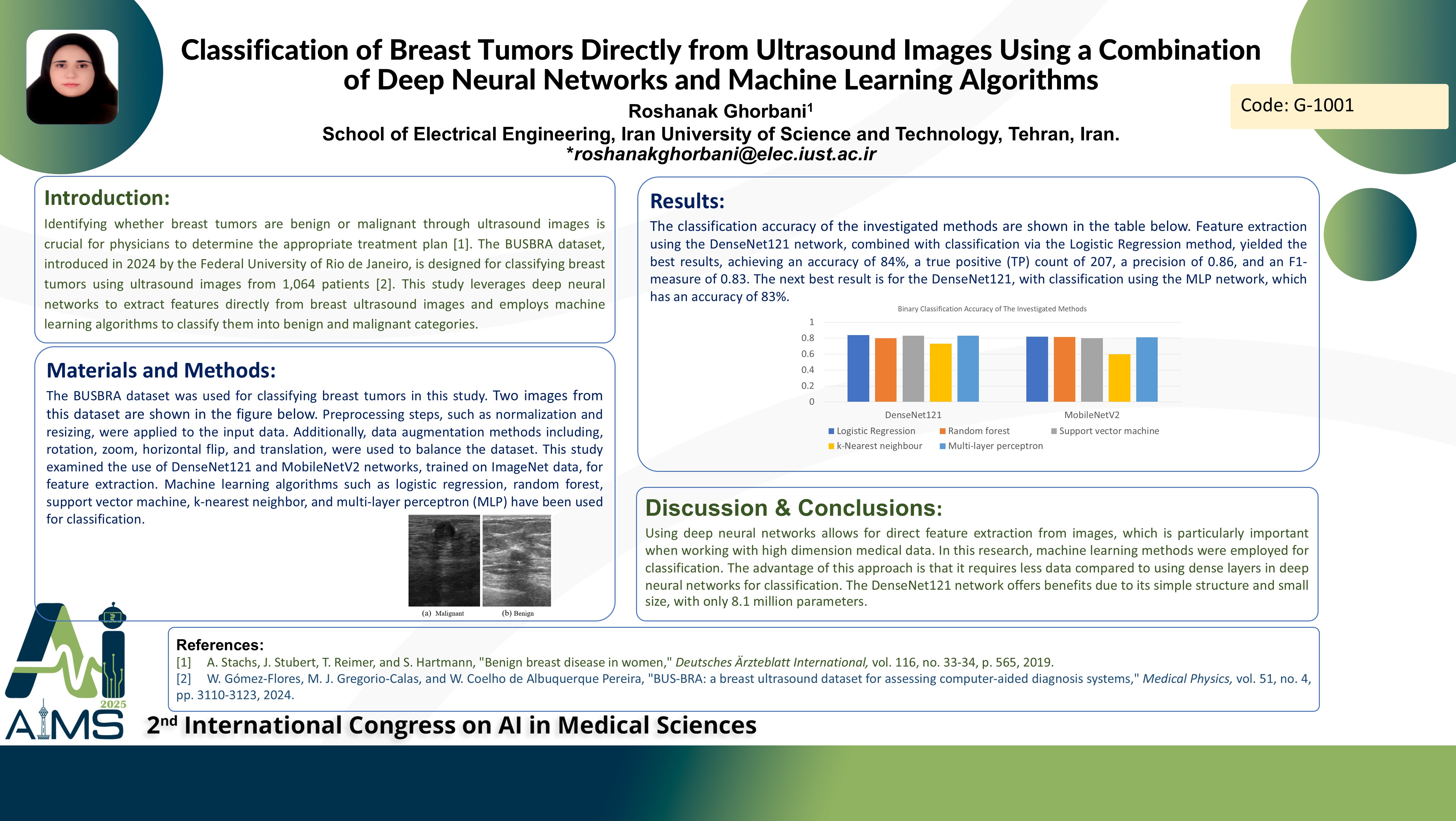کلاسبندی تومورهای سینه به صورت مستقیم از روی تصاویر اولتراسوند با استفاده از ترکیب شبکههای عصبی عمیق و الگوریتمهای یادگیری ماشینی
کد: G-1241
نویسندگان: Roshanak Ghorbani * ℗
زمان بندی: زمان بندی نشده!
برچسب: پردازش سیگنال های پزشکی
دانلود: دانلود پوستر
خلاصه مقاله:
خلاصه مقاله
Background and aims: Identifying whether breast tumors are benign or malignant through ultrasound images is crucial for physicians to determine the appropriate treatment plan. The BUSBRA dataset, introduced in 2024 by the Federal University of Rio de Janeiro, is designed for classifying breast tumors using ultrasound images from 1,064 patients. Features such as tumor shape and boundaries have been used to determine where a tumor is benign or malignant. This study leverages deep neural networks to extract features directly from breast ultrasound images and employs machine learning algorithms to classify them into benign and malignant categories. Method: The BUSBRA dataset was used for classifying breast tumors in this study. Preprocessing steps, such as normalization and resizing, were applied to the input data. Additionally, data augmentation methods including, rotation, zoom, horizontal flip, and translation, were used to balance the dataset. This study examined the use of DenseNet121 and MobileNetV2 networks, trained on ImageNet data, for feature extraction. Machine learning algorithms such as logistic regression, random forest, support vector machine, k-nearest neighbor, and multi-layer perceptron (MLP) have been used for classification. The next best result is for the DenseNet121, with classification using the MLP network, which has an accuracy of 83%. Results: Feature extraction using the DenseNet121 network, combined with classification via the Logistic Regression method, yielded the best results, achieving an accuracy of 84%, a true positive (TP) count of 207, a precision of 0.86, and an F1-measure of 0.83. Conclusion: Using deep neural networks allows for direct feature extraction from images, which is particularly important when working with high dimension medical data. In this research, machine learning methods were employed for classification. The advantage of this approach is that it requires less data compared to using dense layers in deep neural networks for classification. The DenseNet121 network offers benefits due to its simple structure and small size, with only 8.1 million parameters. Overall, the method used in this article has the advantage of requiring less training data for classification.
کلمات کلیدی
Data Augmentation, Feature Extraction, Benign, Malignant,
